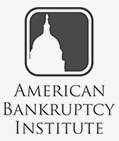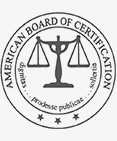Furr Cohen represents businesses and individuals facing substantial debts who need to reorganize their financial affairs through Chapter 11 bankruptcy. A Chapter 11 is often referred to as “reorganization” bankruptcy. The key aspects and benefits of Chapter 11 (traditional) bankruptcy are as follows:
One of the primary purposes of Chapter 11 is to allow businesses to reorganize their debts while continuing their operations. This involves developing a plan to repay creditors over time, typically through reduced payments, extended repayment periods, or a combination of both.
During Chapter 11 proceedings, the existing management typically continues to operate the business as a "debtor in possession,” maintaining control over day-to-day operations while formulating a reorganization plan.
In some cases, the court may approve debtor-in-possession financing to provide additional funds to support ongoing operations during the bankruptcy process.
Once a business files for Chapter 11, an automatic stay is imposed, preventing creditors from taking any further collection actions against the debtor. This gives the debtor breathing space to develop a plan without the immediate threat of lawsuits, foreclosures, or other collection efforts.
Chapter 11 allows debtors to negotiate with creditors to modify the terms of their debts. This may include reducing the principal amount owed, lowering interest rates, or extending the repayment period.
Debtors may opt to sell certain assets to generate funds for creditor repayment as part of the reorganization plan.
Unlike Chapter 7 bankruptcy, where a trustee liquidates the debtor's assets to pay creditors, Chapter 11 allows the existing management to retain control and ownership of the business provided they can propose a viable plan that is accepted by creditors and approved by the court.
Chapter 11 is a flexible process that can be tailored to the specific needs of the debtor. This flexibility is crucial for businesses with complex structures, as it allows for creative solutions to financial problems.
While advantageous, Chapter 11 is a complex process. The success of a Chapter 11 case depends on the debtor’s ability to create a feasible and acceptable reorganization plan and gain approval from creditors and the court. For businesses or individuals where a Chapter 11 is not economically or practicably feasible, other bankruptcy chapters and a state court Assignment for the Benefit of Creditors may be more appropriate. Individuals and businesses considering bankruptcy should consult with an attorney at Furr Cohen to determine the best course of action for their situation.
Subchapter V of Chapter 11 bankruptcy was introduced as part of the Small Business Reorganization Act (SBRA) in 2019 to streamline and expedite the bankruptcy process for small businesses. It is designed to make Chapter 11 more accessible and affordable for businesses with debts below a certain threshold. Here are some benefits of Subchapter V, Chapter 11 bankruptcy:
Subchapter V offers a more streamlined and simplified version of Chapter 11, making it more accessible for small businesses and business owners. The process is designed to be faster and less costly than traditional Chapter 11 proceedings.
In a Subchapter V case, a trustee is appointed to oversee the bankruptcy process. However, unlike in traditional Chapter 11 cases, the business owners usually retain control of the day-to-day operations. The trustee’s role is to facilitate the development and approval of the reorganization plan.
Subchapter V allows business owners to retain their equity in the company even if unsecured creditors are not paid in full. In a traditional Chapter 11 case, creditors often have more control over the reorganization plan, and the owners may have to pay for or lose their equity.
Subchapter V generally reduces certain disclosure requirements, making it less burdensome for small businesses to comply with the bankruptcy process. This can contribute to a more efficient and cost-effective restructuring process.
In a Subchapter V case, the Debtor is the only party that can propose a reorganization plan. This gives small businesses and business owners more control over the bankruptcy process.
In most cases, Subchapter V eliminates the requirement for the formation of an official committee of unsecured creditors. This simplifies the process and reduces administrative expenses.
Subchapter V makes it easier for small businesses and business owners to confirm their reorganization plans, as it reduces the need, in certain cases, for a “cramdown” analysis that is often required in traditional Chapter 11 cases.
It is important to note that Subchapter V is specifically tailored for small businesses and business owners where at least 50 percent of the debt arose from the commercial or business activities of the business or business owner. To qualify, a business or business owner must not exceed a certain debt limit. The debt limit for eligibility is periodically adjusted, and it is advisable for businesses or business owner considering bankruptcy to consult with an attorney at Furr Cohen to determine the most appropriate course of action.












"*" indicates required fields